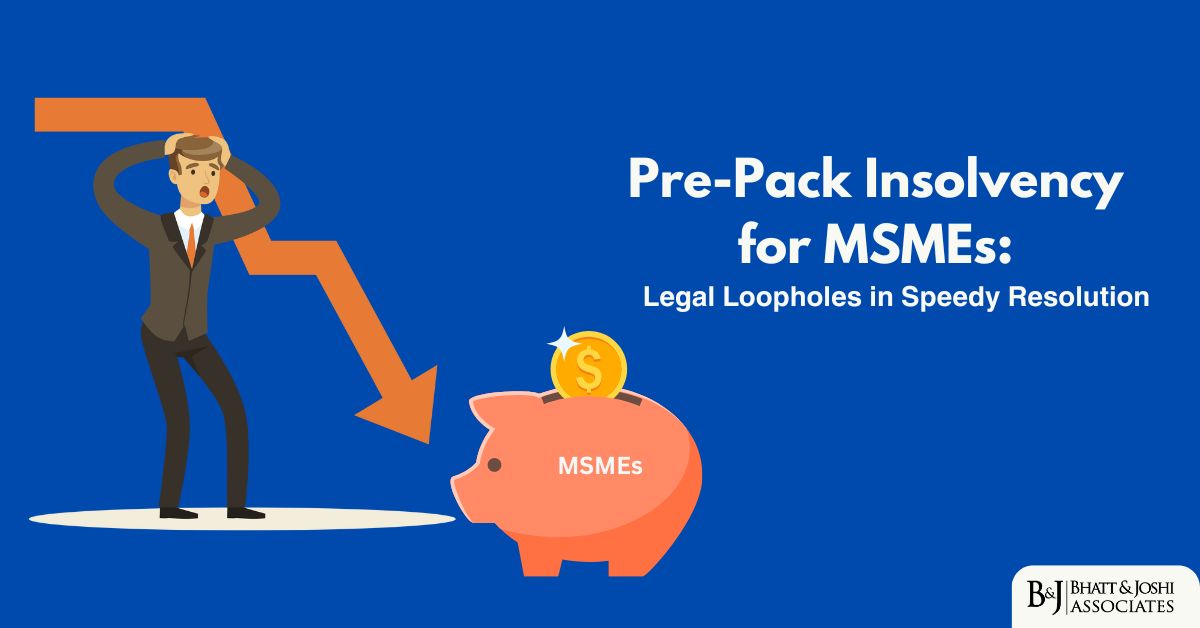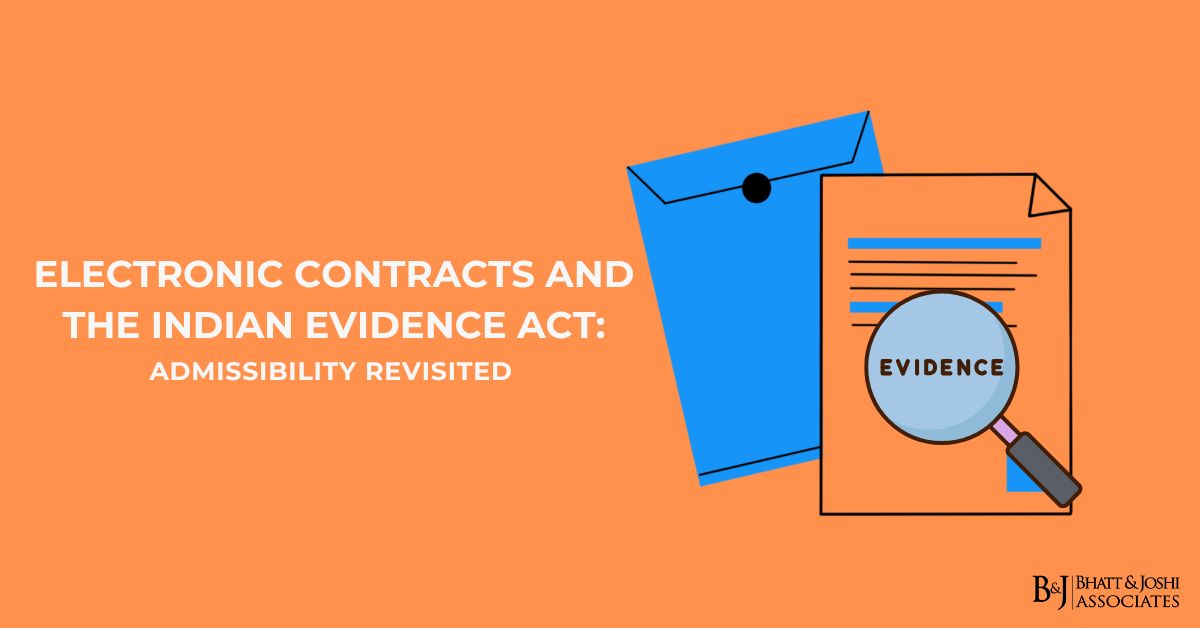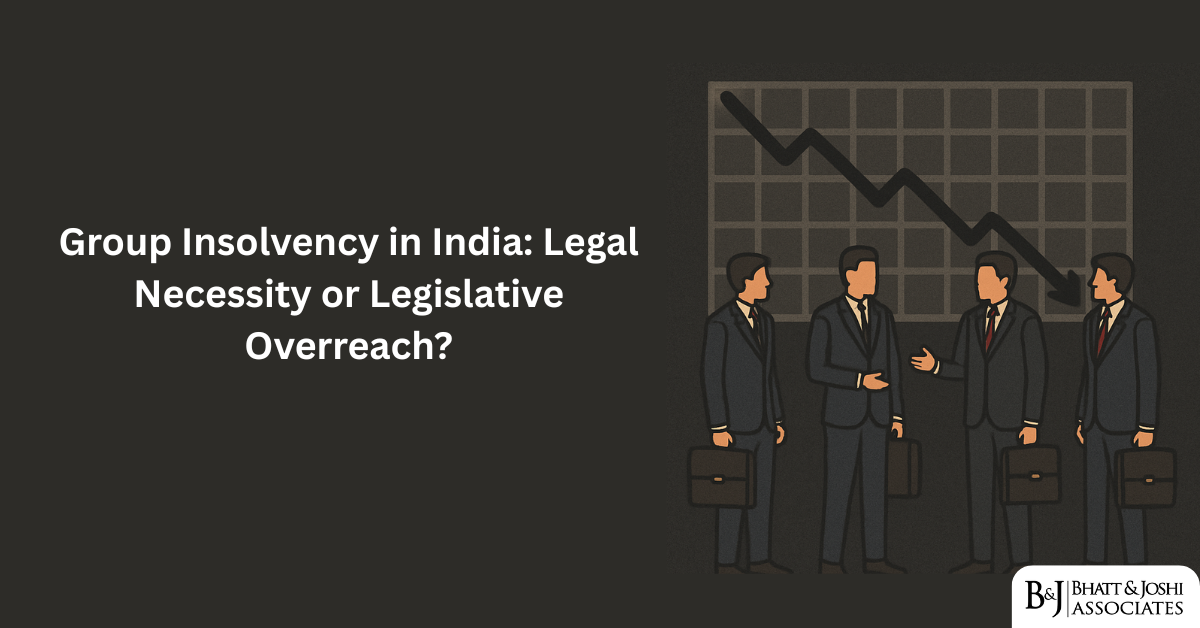Introduction
The digital revolution has fundamentally transformed contractual practices, with electronic contracts now permeating virtually every sector of commercial activity in India. From standard clickwrap agreements and electronic signatures to complex smart contracts deployed on blockchain platforms, electronic contracting has evolved rapidly, presenting significant challenges for India’s evidence law framework. The Indian Evidence Act, 1872—conceived in a paper-based era long before electronic communications—has undergone substantial amendments to accommodate these technological developments, most notably through the Information Technology Act, 2000 (IT Act), and subsequent amendments in 2008. Despite these legislative interventions, courts continue to grapple with nuanced questions regarding the admissibility, authentication, and evidentiary weight of electronic contracts in litigation. This article examines the evolving jurisprudence on electronic contracts under the evidence law in India framework, analyzing landmark judgments, identifying persistent interpretive challenges, and evaluating emerging judicial approaches to novel electronic contracting mechanisms. Through this analysis, the article aims to provide clarity on current admissibility standards while highlighting areas where further judicial development or legislative intervention may be necessary to address technological innovations that continue to outpace legal frameworks.
Legislative Framework: Accommodating Electronic Evidence Under Evidence Law
Amendments to the Evidence Act
The IT Act, 2000 introduced pivotal amendments to the Indian Evidence Act, creating the statutory foundation for electronic evidence admissibility. Section 65A was inserted to establish a special regime for electronic records:
“The contents of electronic records may be proved in accordance with the provisions of section 65B.”
Section 65B provides the procedural framework for admitting electronic evidence:
“(1) Notwithstanding anything contained in this Act, any information contained in an electronic record which is printed on a paper, stored, recorded or copied in optical or magnetic media produced by a computer (hereinafter referred to as the computer output) shall be deemed to be also a document, if the conditions mentioned in this section are satisfied in relation to the information and computer in question and shall be admissible in any proceedings, without further proof or production of the original, as evidence of any contents of the original or of any fact stated therein of which direct evidence would be admissible.”
The section further outlines conditions for admissibility, including requirements that:
- The computer output was produced during the regular course of activities
- The computer was operating properly during the relevant period
- The information was regularly fed into the computer
- The computer was operating properly
Additionally, Section 65B(4) requires a certificate identifying the electronic record and describing the manner of its production, signed by a person occupying a responsible official position in relation to the operation of the relevant device.
IT Act Provisions on Electronic Contracts
The IT Act provides explicit recognition of electronic contracts in Section 10A:
“Where in a contract formation, the communication of proposals, the acceptance of proposals, the revocation of proposals and acceptances, as the case may be, are expressed in electronic form or by means of an electronic record, such contract shall not be deemed to be unenforceable solely on the ground that such electronic form or means was used for that purpose.”
Electronic Contracts under the Evidence law gain enforceability through the combined effect of Section 3 of the IT Act, which recognizes electronic signatures, and Section 65B of the Evidence Act, which lays down the procedural framework for admitting electronic records as evidence. Together, these provisions establish the statutory basis for admitting electronic contracts in legal proceedings.
The Electronic Evidence Consultation Paper published by the Department of Justice in 2020 acknowledged:
“The IT Act and consequent amendments to the Evidence Act represent a concerted legislative effort to modernize India’s evidentiary framework for the digital age. However, technological developments continually outpace legislative adaptation, creating interpretive challenges for courts confronting novel electronic contracting mechanisms.”
Landmark Judgments Shaping Electronic Contracts Under the Evidence Law
The Anvar Case: A Paradigm Shift
The Supreme Court’s landmark decision in Anvar P.V. v. P.K. Basheer (2014) 10 SCC 473 fundamentally reshaped the landscape of electronic evidence admissibility. Overruling prior precedent in State (NCT of Delhi) v. Navjot Sandhu (2005) 11 SCC 600, the Court held:
“Any documentary evidence by way of an electronic record under the Evidence Act, in view of Sections 59 and 65A as amended, can be proved only in accordance with the procedure prescribed under Section 65B. Section 65B deals with the admissibility of electronic records. The purpose of these provisions is to sanctify secondary evidence in electronic form, generated by a computer.”
The Court established that Section 65B certificate was mandatory for the admissibility of electronic evidence:
“An electronic record by way of secondary evidence shall not be admitted in evidence unless the requirements under Section 65B are satisfied. Thus, in the case of CD, VCD, chip, etc., the same shall be accompanied by the certificate in terms of Section 65B obtained at the time of taking the document, without which, the secondary evidence pertaining to that electronic record, is inadmissible.”
This decision established strict compliance with Section 65B as a precondition for admissibility, significantly affecting electronic contract enforcement.
The Shafhi Mohammad Clarification
The Supreme Court provided important clarification in Shafhi Mohammad v. State of Himachal Pradesh (2018) 2 SCC 801, carving a limited exception to the Anvar rule:
“The applicability of procedural requirement under Section 65B(4) of the Evidence Act of furnishing certificate is to be applied only when such electronic evidence is produced by a person who is in a position to produce such certificate being in control of the said device and not of the opposite party.”
This decision recognized practical challenges when electronic evidence is not in the possession of the party seeking to produce it, creating a significant exception for situations where obtaining a certificate is not feasible.
Arjun Panditrao: Reconciliation and Refinement
The Supreme Court’s three-judge bench decision in Arjun Panditrao Khotkar v. Kailash Kushanrao Gorantyal (2020) 7 SCC 1 revisited and refined the position on Section 65B certificates. The Court overruled Shafhi Mohammad and reaffirmed Anvar’s requirement for Section 65B certificates, while introducing important practical accommodations:
“The certificate required under Section 65B(4) is a condition precedent to the admissibility of evidence by way of electronic record… In cases where either a defective certificate is given, or in cases where such certificate has been demanded and is not given by the concerned person, the Judge conducting the trial must summon the person/persons referred to in Section 65B(4) of the Evidence Act and require that such certificate be given by such person/persons.”
The Court further clarified the timing requirement:
“The certificate under Section 65B(4) can be produced at any stage, including before the trial begins. The requirement of producing the certificate under Section 65B(4) is a procedural requirement which does not affect the admissibility of the evidence, but only its mode of proof.”
This decision created a more balanced framework, maintaining the certificate requirement while providing procedural flexibility to prevent technical barriers to justice.
Supreme Court on Authentication of Electronic Contracts under evidence law
In Trimex International FZE Ltd. v. Vedanta Aluminium Ltd. (2010) 3 SCC 1, the Supreme Court specifically addressed electronic contract formation:
“The parties having agreed to a contract by way of exchange of emails, and having acted upon the same, cannot later try to resile from contractual obligations by disputing the mode of formation… While electronic contracts must satisfy the basic requirements of contract law, courts must adapt traditional principles to electronic communications, recognizing their distinctive characteristics.”
The Court further explained in Bodal Chemicals Ltd. v. Gujarat State Fertilizers & Chemicals Ltd. (2016) 3 SCC 500:
“Where parties have established a course of dealing through electronic means, and where the content, context, and conduct of the parties demonstrate consensus ad idem, courts should not allow technical objections regarding the mode of contract formation to defeat legitimate contractual expectations.”
These decisions demonstrate judicial willingness to recognize and enforce electronic contracts while adapting traditional contract law principles to digital contexts.
Types of Electronic Contracts and Their Treatment Under the Evidence Law
Email Exchanges and Digital Communications
Email exchanges representing contractual negotiations and agreements have generated substantial litigation. In M/s Trimex International FZE Ltd. v. Vedanta Aluminium Ltd. (2010) 3 SCC 1, the Supreme Court recognized that contracts can be validly formed through email exchanges:
“Once negotiations have been finalized through a series of emails and parties commence performance, the requirements of a valid contract under the Indian Contract Act can be satisfied through electronic communications.”
The Delhi High Court, in Ambalal Sarabhai Enterprise Ltd. v. KS Infraspace LLP (2020 SCC OnLine Del 351), provided detailed guidance on authenticating email contracts:
“For emails to be admitted as evidence of contractual agreements, parties must establish: (1) authenticity through metadata, transmission records, and server logs; (2) integrity through evidence that the content remains unaltered; and (3) attribution through evidence connecting the communication to the purported author. Section 65B certificates must address these elements specifically rather than providing generic verification.”
The Bombay High Court, in Roshan Ramodiya v. Suresh Merja (2019 SCC OnLine Bom 2650), recognized the evidentiary challenges of email contracts:
“Unlike traditional signed documents, emails present unique authentication challenges. Courts must examine header information, transmission data, access controls, and contextual evidence to verify authenticity. The Section 65B certificate must specifically address how the email was stored, accessed, and reproduced to satisfy the statutory requirements.”
These decisions demonstrate judicial development of authentication standards specific to email contracts.
Clickwrap and Browsewrap Agreements
Clickwrap and browsewrap agreements—now ubiquitous in e-commerce—present distinct evidentiary challenges. In World Phone India Pvt. Ltd. v. WPI Group Inc. (2013 SCC OnLine Del 3793), the Delhi High Court addressed clickwrap agreement admissibility:
“For clickwrap agreements to be admissible, the party relying on the agreement must produce evidence demonstrating: (1) the exact terms presented to the user; (2) the manner in which assent was required; (3) the timestamp and technical records of the assent action; and (4) the impossibility of proceeding without manifest assent. These elements must be certified under Section 65B to establish both the existence and terms of the agreement.”
The Bombay High Court, in Star India Pvt. Ltd. v. Laxmiraj Seetharam Nayak (2020 SCC OnLine Bom 880), considered the evidentiary requirements for browsewrap agreements:
“Browsewrap agreements, which purport to bind users without requiring explicit assent, face heightened evidentiary challenges. The proponent must establish not merely that terms were accessible, but that they were prominently displayed, clearly identified as contractual, and presented in a manner giving reasonable notice to users. Backend records demonstrating user interaction with the terms page strengthen admissibility.”
The Delhi High Court further elaborated in Jasper Infotech Pvt. Ltd. v. Deepak Bhandari (2022 SCC OnLine Del 2432):
“To admit electronic records of clickwrap acceptance as evidence, the Section 65B certificate must specifically address the technical architecture of the acceptance mechanism, including how the system records and stores consent actions, security measures preventing manipulation, and the exact user journey demonstrating meaningful opportunity for review before acceptance.”
These decisions demonstrate judicial development of specific authentication standards for online adhesion contracts.
Electronic and Digital Signatures
The evidentiary treatment of electronic and digital signatures has received significant judicial attention. In Ricacorp Properties Ltd. v. Paramount Export Pvt. Ltd. (2021 SCC OnLine Bom 707), the Bombay High Court distinguished between digital signatures (issued by certifying authorities under the IT Act) and electronic signatures (broader category including various authentication methods):
“Digital signatures under Section 3 of the IT Act, backed by certificates from authorized certification authorities, enjoy a statutory presumption of authenticity under Section 85B of the Evidence Act. This presumption significantly eases the evidentiary burden compared to other forms of electronic signatures, which require more extensive authentication evidence.”
The Delhi High Court, in Rajni Kant v. Satyawati (2019 SCC OnLine Del 9320), addressed authentication challenges for non-certified electronic signatures:
“For electronic signatures not issued by certifying authorities, courts must examine evidence establishing: (1) the signature creation process; (2) the method of attribution to the signatory; (3) security features preventing unauthorized use; and (4) audit trails documenting the signature event. The Section 65B certificate must comprehensively address these elements.”
The Supreme Court, in Punjab National Bank v. Vikram Pratap (2020) 7 SCC 695, emphasized the importance of security protocols:
“The evidentiary weight accorded to electronic signatures depends significantly on the robustness of the authentication protocols employed. Multifactor authentication, biometric verification, and comprehensive audit trails substantially strengthen the reliability of electronic signatures for evidentiary purposes.”
These decisions establish differentiated evidentiary standards based on the technical security features of different signature types.
Smart Contracts and Blockchain Evidence
Emerging technologies like blockchain-based smart contracts present novel evidentiary challenges. Though Indian jurisprudence remains limited, several High Courts have begun addressing these issues. In Karmanya Singh v. Union of India (2019 SCC OnLine Del 8903), the Delhi High Court noted:
“Distributed ledger technologies like blockchain create unique evidentiary challenges and opportunities. While blockchain records offer enhanced security through cryptographic validation and distributed storage, courts must still require Section 65B certificates addressing the specific blockchain architecture, consensus mechanism, and extraction methodology to satisfy admissibility requirements.”
The Karnataka High Court, in Divya Krishnan v. Yatish Krishnan (2021 SCC OnLine Kar 2356), considered the admissibility of smart contract execution records:
“Smart contracts—self-executing code deployed on blockchain platforms—require specialized evidentiary treatment. Parties seeking to admit smart contract evidence must provide Section 65B certificates explaining the code functionality, execution conditions, and blockchain verification mechanisms in comprehensible terms that allow judicial assessment of contractual validity.”
These emerging decisions suggest courts are beginning to develop specialized approaches for blockchain-based contractual evidence.
Challenges in Proving Electronic Contracts Under the Evidence Law
Technical Complexity and Judicial Comprehension
Courts have acknowledged challenges in understanding complex electronic evidence. In State v. Navjot Sandhu (2005) 11 SCC 600, the Supreme Court noted:
“Electronic evidence presents challenges of technical complexity potentially beyond the expertise of judges trained in traditional legal disciplines. Courts must balance ensuring technical rigor with practical adjudication, developing approaches that maintain evidentiary integrity without allowing technical complexity to obstruct justice.”
The Delhi High Court, in Dharambir v. Central Bureau of Investigation (2008 SCC OnLine Del 596), proposed a solution:
“When confronted with complex electronic evidence, courts should not hesitate to appoint technical experts under Section 45 of the Evidence Act to assist in understanding technical aspects while maintaining judicial control over admissibility determinations. This collaborative approach combines technical expertise with legal judgment.”
These decisions recognize the need for specialized expertise in evaluating complex electronic evidence.
Preservation Challenges and Spoliation Concerns
The ephemeral nature of electronic evidence creates preservation challenges. In HDFC Bank Ltd. v. Laxmi International (2016 SCC OnLine Del 5585), the Delhi High Court observed:
“Electronic evidence is inherently mutable and potentially ephemeral, creating both preservation challenges and spoliation concerns. Courts must consider developing specialized rules regarding preservation obligations, adverse inferences for failure to preserve, and authentication requirements for reconstructed evidence.”
The Bombay High Court, in Jyoti Harshad Mehta v. Custodian (2009 SCC OnLine Bom 830), addressed reconstruction of electronic evidence:
“Where primary electronic records have been lost or destroyed, secondary evidence may be admitted subject to enhanced scrutiny. The party must establish both the original existence and content of the electronic record through corroborating evidence and provide detailed explanation of the circumstances of loss or destruction.”
These decisions develop judicial approaches to the unique preservation challenges of electronic evidence.
Cross-Border Electronic Contracting
Electronic Contracts Under the Evidence law frequently cross jurisdictional boundaries, creating evidentiary complications. In Federal Express Corporation v. Fedex Securities Ltd. (2017 SCC OnLine Del 8974), the Delhi High Court noted:
“Cross-border electronic contracts present particular evidentiary challenges, as servers, signatories, and electronic records may span multiple jurisdictions with different evidentiary rules. Section 65B certificates must specifically address the international dimension, explaining clearly how foreign-stored electronic records were accessed, verified, and reproduced.”
The Madras High Court, in M/s Sai Agencies v. Sharon Bio-Medicine Ltd. (2020 SCC OnLine Mad 2842), highlighted international authentication challenges:
“Where electronic contracts involve international parties with records stored on foreign servers, traditional Section 65B certification may require supplementation through international judicial assistance, letters rogatory, or expert testimony establishing the authenticity of records extracted from foreign systems.”
These decisions recognize the additional complexity introduced by cross-border electronic contracting.
Emerging Standards and Best Practices
Comprehensive Section 65B Certificates
Courts have increasingly emphasized the need for detailed, technically precise Section 65B certificates. In Arjun Panditrao Khotkar v. Kailash Kushanrao Gorantyal (2020) 7 SCC 1, the Supreme Court noted:
“Section 65B certificates should not be treated as mere formalities or drafted in generic terms. They must provide specific technical details enabling the court to understand precisely how the electronic record was created, stored, extracted, and reproduced. Certificates lacking technical specificity may be deemed insufficient despite formal compliance.”
The Delhi High Court, in Kundan Singh v. State (2022 SCC OnLine Del 1146), elaborated on certificate requirements for different electronic contract types:
“Section 65B certificates for electronic contracts must be tailored to the specific technology involved. Email contract certificates should address server authenticity, header information, and access controls. Digital signature certificates must explain the cryptographic validation process. Cloud-stored document certificates must detail access restrictions and version control. Generic certificates not addressing the specific technology are inadequate.”
These decisions establish increasingly rigorous standards for Section 65B certification.
Metadata Preservation and Hash Values
Courts have recognized the importance of metadata and cryptographic validation. In Avitel Post Studios Ltd. v. HSBC PI Holdings (Mauritius) Ltd. (2020 SCC OnLine Bom 407), the Bombay High Court observed:
“Metadata—the ‘data about data’ embedded in electronic files—provides crucial authentication evidence for electronic contracts. Creation dates, modification history, author information, and system data can establish authenticity and chronology. Section 65B certificates should specifically address metadata preservation and explain any apparent anomalies.”
The Delhi High Court, in State v. Zahoor Ahmad Wani (2019 SCC OnLine Del 10867), emphasized cryptographic validation:
“Hash values—cryptographic representations that uniquely identify electronic files—provide powerful authentication evidence. Contemporaneous hash values generated and preserved through proper chain of custody can demonstrate file integrity by mathematically proving the absence of tampering or modification.”
These decisions establish technical standards for preserving and authenticating electronic evidence integrity.
Proportionality and Pragmatism
Courts have increasingly adopted proportional approaches balancing technical rigor with practical justice. In Arjun Panditrao Khotkar v. Kailash Kushanrao Gorantyal (2020) 7 SCC 1, the Supreme Court stated:
“While technical compliance with Section 65B is mandatory, courts must apply these requirements with an awareness of practical realities and the fundamental objective of rendering justice. Where substantial compliance exists and technical deficiencies can be remedied without prejudice to parties, courts should adopt pragmatic approaches rather than allowing technical objections to defeat substantive justice.”
The Bombay High Court, in Union Bank of India v. Rajbhushan Sugar Works Ltd. (2022 SCC OnLine Bom 526), applied this proportional approach:
“The admissibility requirements for electronic evidence must be applied contextually, with attention to the nature of the proceeding, the centrality of the evidence, the technical sophistication of the parties, and the potential prejudice from admission or exclusion. Technical requirements serve important authentication purposes but should not become insurmountable barriers divorced from their underlying purpose.”
These decisions reflect judicial development of proportional approaches balancing technical rigor with practical justice.
Conclusion
The jurisprudence on electronic contracts under the evidence law in India framework reveals a system in transition—simultaneously adapting traditional evidentiary principles to digital realities while developing specialized approaches for novel electronic contracting mechanisms. Through landmark decisions like Anvar, Shafhi Mohammad, and Arjun Panditrao, the Supreme Court has established increasingly clear standards governing electronic evidence admissibility, while High Courts have developed more granular approaches to specific electronic contract technologies.
Several significant trends emerge from this evolving jurisprudence. First, courts have generally maintained the Section 65B certificate requirement as a mandatory condition for admissibility while creating procedural accommodations to prevent technical requirements from obstructing substantive justice. Second, courts have developed technology-specific authentication standards recognizing the distinctive characteristics of emails, clickwrap agreements, electronic signatures, and emerging technologies like blockchain. Third, courts have increasingly emphasized metadata, hash values, and technical validation methods that provide objective authentication evidence beyond traditional testimonial authentication.
Looking forward, several challenges warrant attention. The technical complexity of electronic evidence continues to outpace judicial expertise, suggesting a need for more robust technical training for judges and greater utilization of court-appointed experts. The global nature of electronic contracting creates jurisdictional complications requiring both judicial innovation and potential legislative attention. Emerging technologies like smart contracts, decentralized autonomous organizations, and artificial intelligence-generated agreements will likely require further evolution of evidentiary standards.
The Indian legal framework governing Electronic Contracts Under the Evidence law has evolved significantly from its paper-based origins, yet continued development remains essential. As electronic contracting technologies advance, courts must balance strict authentication standards with practical approaches that support legitimate digital commerce. The jurisprudence explored in this article indicates that Indian courts are successfully striking this balance, adopting nuanced methods that embrace innovation while preserving fundamental evidentiary principles for fair adjudication. Notably, Section 3 of the IT Act recognizes electronic signatures, and Section 65B of the Evidence Act establishes procedures for admitting electronic records as evidence. Together, these provisions form the statutory foundation for enforcing electronic agreements in legal proceedings.













